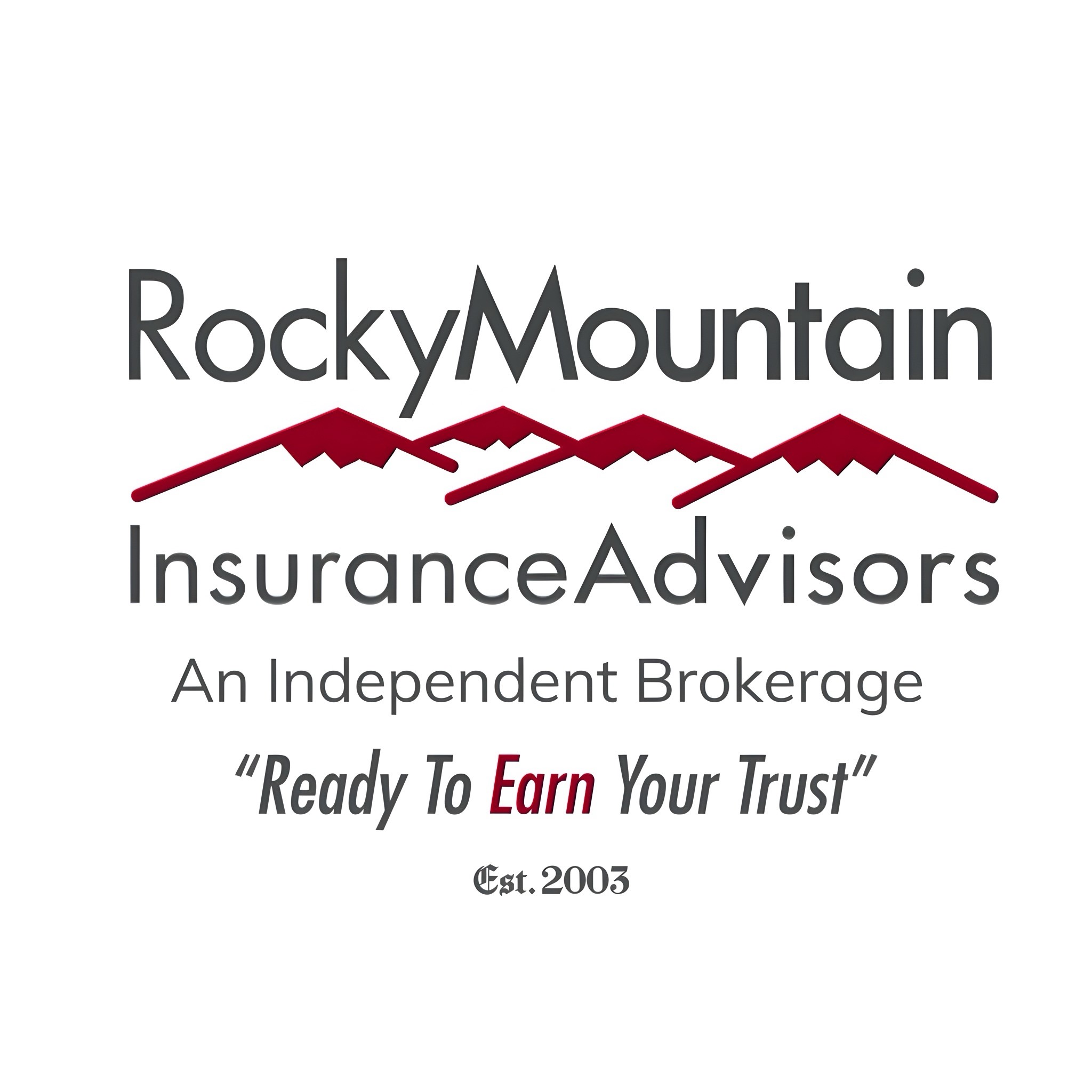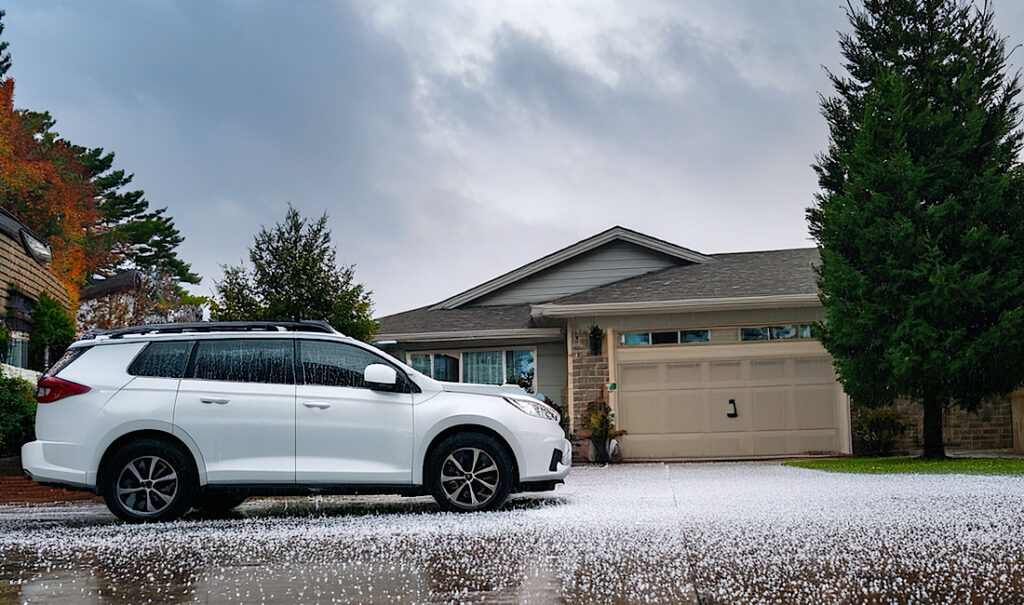When a hailstorm hits the Front Range, it can take just minutes for years of investment to be compromised. From Castle Rock to Colorado Springs and up through the Denver Metro area, hailstorms are an unfortunate part of life. In fact, Colorado consistently ranks second in the United States for hail damage insurance claims, trailing only Texas. For homeowners, understanding how to navigate the claims process after a hailstorm is critical.
At Rocky Mountain Insurance Advisors (RMIA), we’ve spent years helping Colorado homeowners recover after these intense weather events. This guide walks you through the essential steps to take after a hailstorm, explains the common mistakes to avoid, and details how our agency helps Castle Rock residents protect their homes and secure fair claim settlements.
Understanding Hail Damage in Colorado
Colorado’s location along “Hail Alley”—stretching from Denver south through Colorado Springs—means hailstorms are both frequent and severe. The National Oceanic and Atmospheric Administration (NOAA) reports that Colorado averages between 10 to 15 hail events annually, with hailstones often exceeding one inch in diameter.
The impact of these storms can vary based on:
- Roof material and age – Asphalt shingles deteriorate faster, while metal or tile roofs often fare better.
- Wind speed and direction – Strong gusts can drive hail sideways, increasing shingle granule loss and water intrusion.
- Hailstone size – Hail larger than one inch can puncture shingles, dent flashing, and even crack roof vents or skylights.
Many homeowners don’t realize that even small hail can cause long-term roof damage, leading to leaks, attic mold, and insulation issues months later. Unfortunately, delayed inspections often result in denied claims, as insurers may argue that damage was due to wear and tear rather than a covered hail event.
Step-by-Step: Filing a Hail Claim in Colorado
Navigating an insurance claim can be overwhelming, especially after a damaging storm. Here’s a structured process to help Colorado homeowners manage it confidently:
1. Inspect and Document Immediately
Once it’s safe, take clear photos and videos of your property. Capture roof surfaces, gutters, windows, siding, and outdoor fixtures. If possible, include timestamps. RMIA recommends keeping a storm log noting the date, time, and duration of the hail event.
2. Schedule a Professional Roof Inspection
Even if damage seems minor, always schedule a qualified roofing contractor or public adjuster to perform a professional assessment. According to the Insurance Institute for Business & Home Safety (IBHS), more than 60% of hail-related roof claims involve hidden damage that homeowners cannot identify on their own.
3. Contact Your Insurance Agent First—Not the Adjuster
This is one of the most important yet commonly misunderstood steps. Before calling your insurer’s claims department directly, reach out to your independent agent at Rocky Mountain Insurance Advisors. We’ll help you determine:
- Whether filing a claim makes financial sense given your deductible.
- How to avoid language or statements that could harm your claim.
- Which contractors or inspectors are most reputable in your area.
4. File the Claim and Schedule the Adjuster’s Visit
Once we’ve reviewed your photos and inspection report, we’ll guide you through the claim filing process. When the adjuster arrives, it’s best to have your agent or roofing professional present. Their expertise helps ensure that all damage—both visible and structural—is accounted for in the inspection report.
5. Review the Estimate Carefully
When you receive the insurance estimate, do not assume it reflects the true cost of repairs. At RMIA, we regularly compare insurer estimates with local contractor bids. In many cases, we identify missing line items such as flashing replacement, underlayment upgrades, or ridge cap repairs that should be included in the payout.
6. Approve the Work and Keep Documentation
Once you’ve selected a contractor, make sure all paperwork—including warranties, receipts, and lien waivers—is properly stored. Insurance companies may request this documentation during or after the repair process.
7. Stay Alert for Post-Storm Scams
Colorado’s Attorney General warns homeowners annually about “storm chasers”—out-of-state contractors who appear after large hailstorms promising “free roofs” or “zero deductible” repairs. Always verify licensing, check local reviews, and avoid signing contracts until your claim is approved.
Common Mistakes Homeowners Make After a Hailstorm
Despite good intentions, many Colorado homeowners make simple mistakes that cost them thousands. Below are the most frequent missteps we see at RMIA:
- Waiting too long to file: Most insurance companies require claims within 12 months of the storm date. Delays can lead to denial.
- Failing to document damage immediately: Without timestamped evidence, proving storm-related impact becomes difficult.
- Accepting the first adjuster’s estimate: Initial assessments are often conservative; you have the right to request reinspection.
- Not understanding depreciation and recoverable cash value (RCV): Many homeowners think the first check is their full payment. In reality, insurers often hold back part of the payout until repairs are completed.
- Hiring unverified contractors: This can void warranties and create legal complications if work is subpar.
- Ignoring minor damage: Small dents or missing granules may seem insignificant but can lead to costly leaks over time.
According to the Colorado Division of Insurance, roughly 22% of hail claims require supplemental adjustments due to initial underestimation. Having an experienced insurance advisor on your side ensures that your settlement reflects the full scope of necessary repairs.
How Rocky Mountain Insurance Advisors Advocates for You
At RMIA, we pride ourselves on being more than policy providers—we are your advocates. From the first phone call to the final repair, our goal is to make the process smooth, transparent, and fair.
Here’s how we help our clients across Castle Rock and the Front Range:
- Pre-Storm Planning – We review your existing coverage annually to ensure proper roof replacement cost limits, wind/hail deductibles, and exclusions.
- Claims Assistance – We coordinate with reputable local roofing specialists to verify adjuster findings and challenge insufficient payouts.
- Reinspection Requests – If the insurer’s estimate undervalues your damage, we formally request a reinspection on your behalf.
- Communication Support – We handle documentation, photos, and correspondence to reduce stress and confusion during the claims process.
- Local Expertise – Our team understands the unique hailstorm patterns, municipal codes, and contractor requirements in Castle Rock, Parker, and Douglas County.
Our clients frequently report that having a local advocate results in faster resolutions and better financial outcomes. On average, policyholders who work with an independent advisor during hail claims receive 10–15% higher settlements, according to industry data from the Independent Insurance Agents & Brokers of America (IIABA).
Roof Maintenance and Prevention Tips
While hailstorms are unavoidable, proactive maintenance can minimize future damage and improve your roof’s resilience. Here are several practical steps to take:
- Schedule annual roof inspections, ideally in spring before storm season.
- Trim overhanging branches to prevent additional impact during wind-driven hail.
- Upgrade to impact-resistant shingles (Class 4)—they can lower premiums and extend roof life by up to 30%.
- Keep gutters clear to allow proper water drainage after storms.
- Review your policy’s wind/hail deductible annually; many insurers in Colorado now use percentage-based deductibles tied to home value.
Rocky Mountain Insurance Advisors can help you compare roof material options and insurance savings. Many carriers offer up to 20% discounts for homes with verified impact-resistant roofing.
Why Timely Action Matters in Castle Rock
Castle Rock and the southern Front Range are particularly vulnerable due to their elevation and storm convergence patterns. The average hail season here runs from April through September, peaking in late June and early July.
Delaying your claim or repairs can lead to:
- Water intrusion beneath damaged shingles
- Mold growth in attics or insulation
- Reduced home resale value
- Expired claim windows with insurers
By contacting your Rocky Mountain Insurance Advisors team immediately after a hailstorm, you ensure your damage is professionally documented, accurately estimated, and fairly compensated.
For Colorado homeowners, hailstorms aren’t a question of “if” but “when.” Knowing what to do in the aftermath can make all the difference between a smooth recovery and a frustrating claims experience.
If you’ve recently experienced hail damage or want to prepare for the next storm season, call 303-663-9457 or contact Rocky Mountain Insurance Advisors today. Our local experts will review your coverage, recommend smart updates, and help you build a protection plan that keeps your home and family secure year-round.

